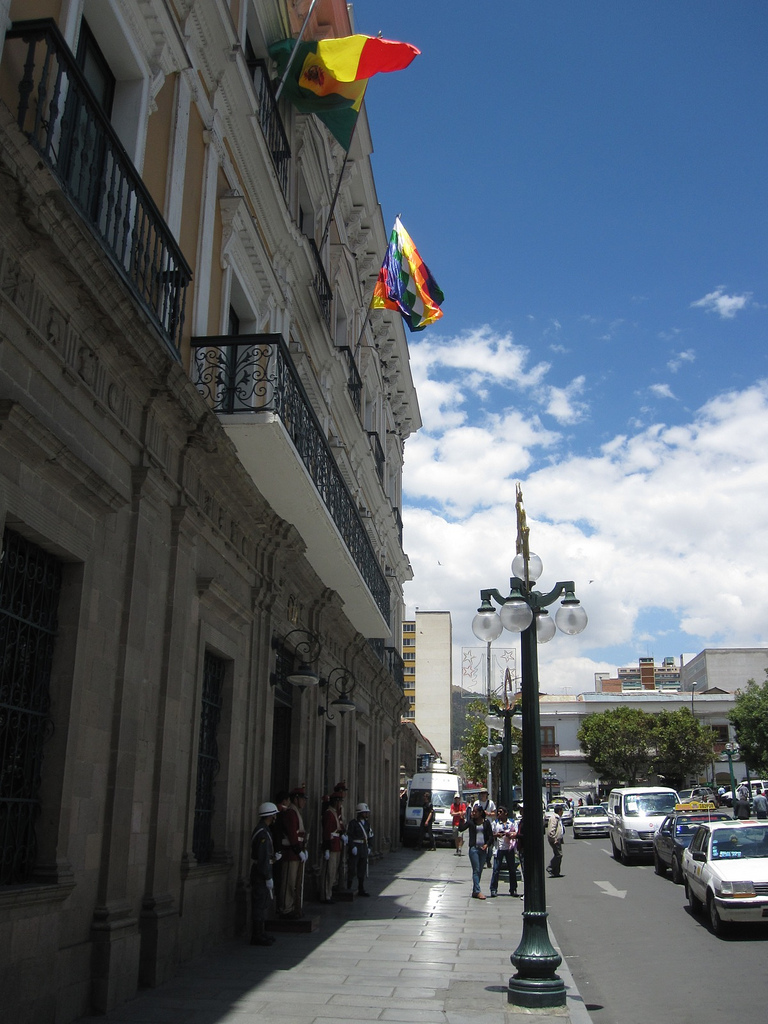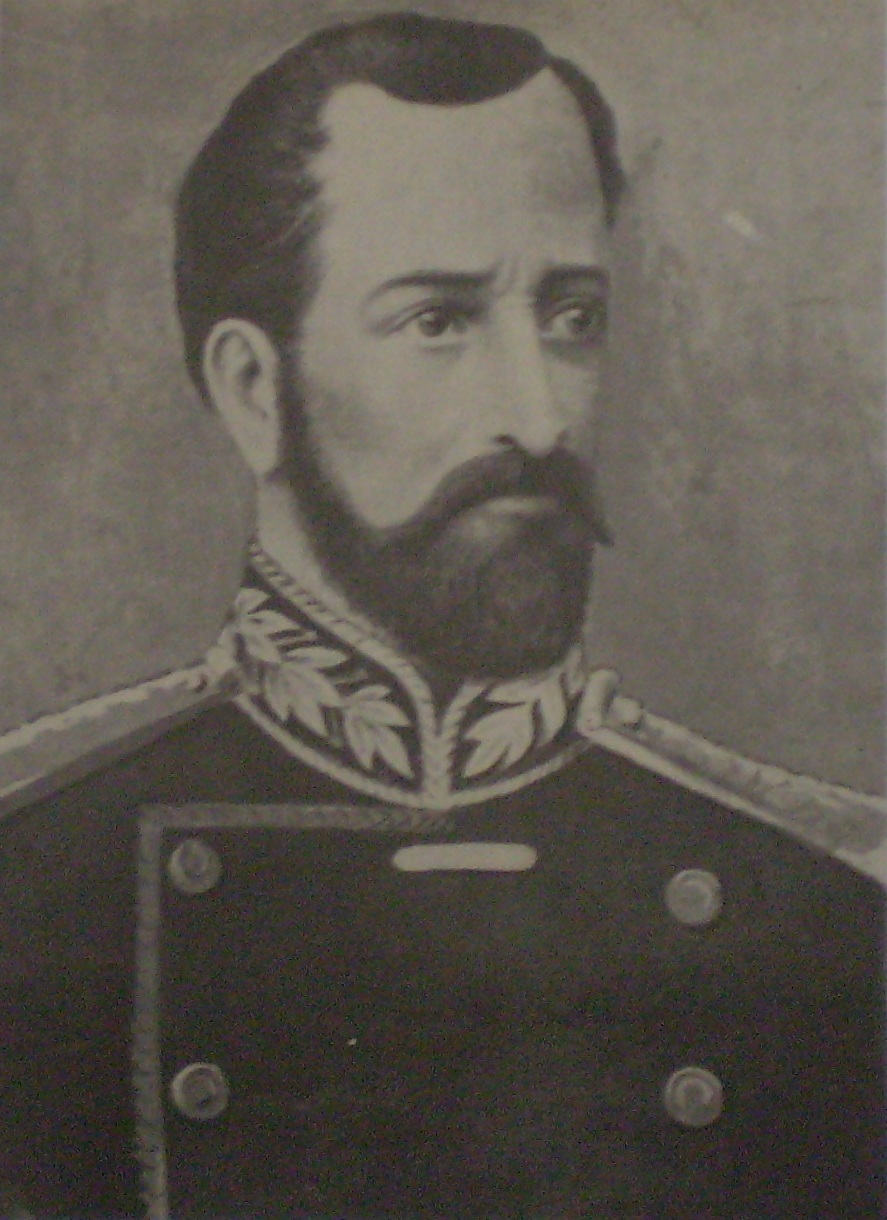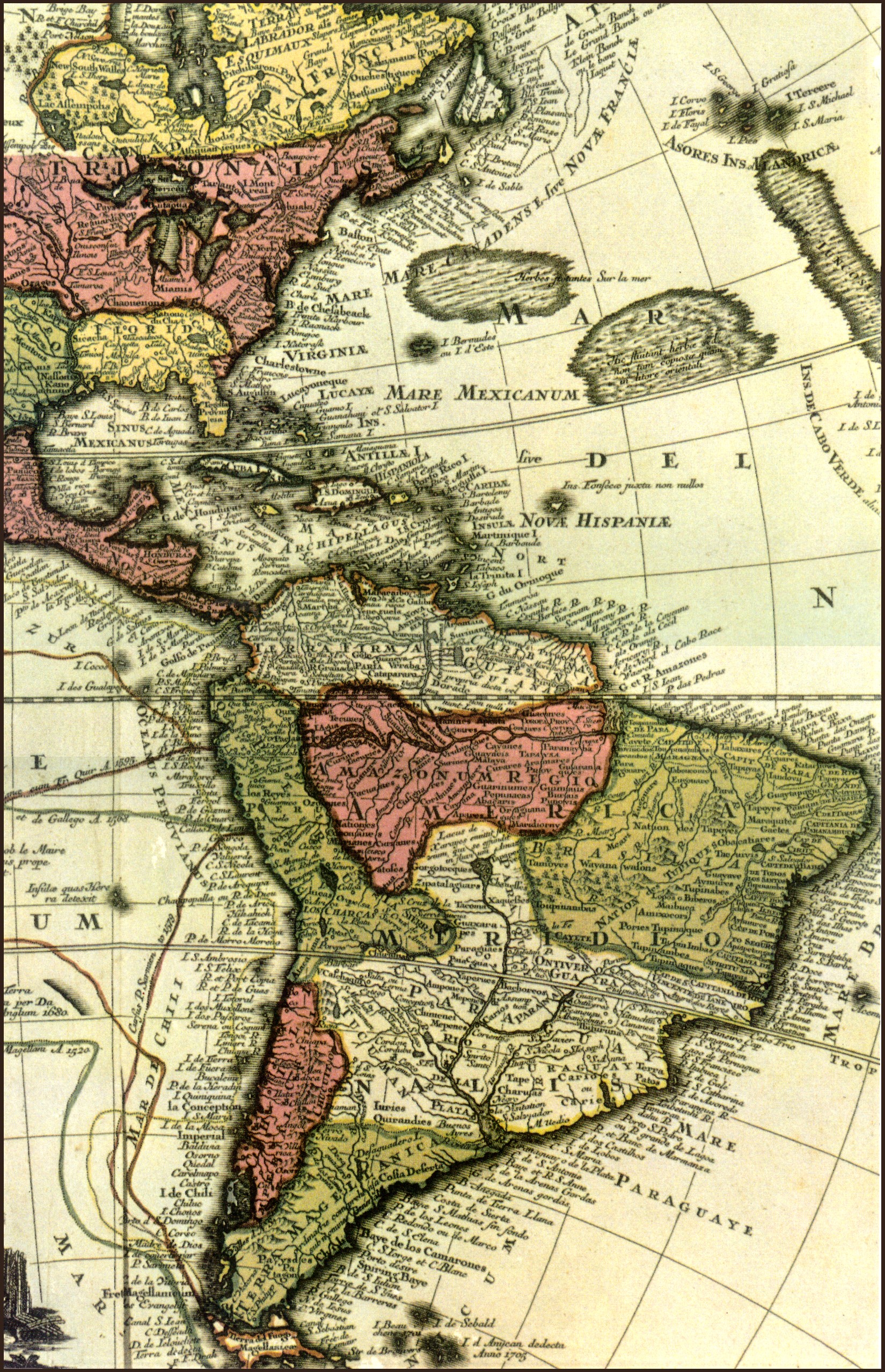|
Santiago De Chiquitos
Santiago de Chiquitos is a small town in Roboré Municipality in Chiquitos Province, Santa Cruz Department, Bolivia. The mission of Santiago de Chiquitos is one of the Jesuit Missions of the Chiquitos. The town is located 467 km east of the city of Santa Cruz de la Sierra and 22 km from the town of Roboré. It has a population of 1,927 as of the 2012 census, and is located within the Tucavaca Valley Municipal Reserve. History In 1754, the Jesuit Mission of Santiago de Chiquitos was founded by Jesuit missionaries Gaspar Troncoso and Gaspar Campos. Languages Camba Spanish is the most commonly used everyday language. The Santiagueño dialect of Chiquitano is also spoken in the town.Nikulin, Andrey. 2020. Proto-Macro-Jê: um estudo reconstrutivo'. Doctoral dissertation, University of Brasília. Culture The annual fiesta takes place on July 25. The town maintains religious musical traditions. See also * List of Jesuit sites This list includes past and presen ... [...More Info...] [...Related Items...] OR: [Wikipedia] [Google] [Baidu] |
Flag Of Bolivia
The national flag of the Plurinational State of Bolivia was originally adopted in 1851. The state and war flag is a horizontal tricolour (flag), tricolor of red, yellow and green with the Coat of Arms of Bolivia, Bolivian coat of arms in the center. According to one source, the red stands for Bolivia's brave soldiers, while the green symbolizes soil fertility, fertility and yellow the nation's mineral deposits. According to the revised Constitution of Bolivia of 2009, the Wiphala is considered a national symbol of Bolivia (along with the tricolor flag, National anthem of Bolivia, national anthem, Coat of arms of Bolivia, coat of arms, the cockade; Cantua buxifolia, kantuta flower and patujú flower). Despite its landlocked status, Bolivia has a naval ensign used by navy vessels on rivers and lakes. It consists of a blue field with the state flag in the Flag terminology, canton bordered by nine small yellow five-pointed stars, with a larger yellow five-pointed star in the fly. ... [...More Info...] [...Related Items...] OR: [Wikipedia] [Google] [Baidu] |
Tucavaca Valley Municipal Reserve
Tucavaca Valley Municipal Reserve (''Reserva Municipal Valle de Tucavaca'') is a protected area in Bolivia situated in the Santa Cruz Department, Chiquitos Province, Roboré Municipality. The reserve is located at an altitude between 200 m and 1250 m above sea level (Mount Chochís). It comprises the Santiago mountain range (''Serranía de Santiago'') and the Tucavaca valley. The historical Jesuit mission and town of Santiago de Chiquitos Santiago de Chiquitos is a small town in Roboré Municipality in Chiquitos Province, Santa Cruz Department, Bolivia. The mission of Santiago de Chiquitos is one of the Jesuit Missions of the Chiquitos. The town is located 467 km east of the ci ... is located within the reserve. External links www.fcbc.org.bo / ''Áreas protegidas en la región del Bosque Chiquitano''(Spanish) Protected areas of Bolivia Geography of Santa Cruz Department (Bolivia) Protected areas established in 2000 {{SantaCruzBO-geo-stub ... [...More Info...] [...Related Items...] OR: [Wikipedia] [Google] [Baidu] |
Tourist Attractions In Santa Cruz Department (Bolivia)
Tourism is travel for pleasure, and the Commerce, commercial activity of providing and supporting such travel. World Tourism Organization, UN Tourism defines tourism more generally, in terms which go "beyond the common perception of tourism as being limited to holiday activity only", as people "travelling to and staying in places outside their usual environment for not more than one consecutive year for leisure and not less than 24 hours, business and other purposes". Tourism can be Domestic tourism, domestic (within the traveller's own country) or International tourism, international. International tourism has both incoming and outgoing implications on a country's balance of payments. Between the second half of 2008 and the end of 2009, tourism numbers declined due to a severe Economy, economic slowdown (see Great Recession) and the outbreak of the 2009 2009 flu pandemic, H1N1 influenza virus. These numbers, however, recovered until the COVID-19 pandemic put an abrupt end to th ... [...More Info...] [...Related Items...] OR: [Wikipedia] [Google] [Baidu] |
Buildings And Structures In Santa Cruz Department (Bolivia)
A building or edifice is an enclosed structure with a roof, walls and windows, usually standing permanently in one place, such as a house or factory. Buildings come in a variety of sizes, shapes, and functions, and have been adapted throughout history for numerous factors, from building materials available, to weather conditions, land prices, ground conditions, specific uses, prestige, and aesthetic reasons. To better understand the concept, see ''Nonbuilding structure'' for contrast. Buildings serve several societal needs – occupancy, primarily as shelter from weather, security, living space, privacy, to store belongings, and to comfortably live and work. A building as a shelter represents a physical separation of the human habitat (a place of comfort and safety) from the ''outside'' (a place that may be harsh and harmful at times). buildings have been objects or canvasses of much artistic expression. In recent years, interest in sustainable planning and building practi ... [...More Info...] [...Related Items...] OR: [Wikipedia] [Google] [Baidu] |
Populated Places In Santa Cruz Department (Bolivia)
Population is a set of humans or other organisms in a given region or area. Governments conduct a census to quantify the resident population size within a given jurisdiction. The term is also applied to non-human animals, microorganisms, and plants, and has specific uses within such fields as ecology and genetics. Etymology The word ''population'' is derived from the Late Latin ''populatio'' (a people, a multitude), which itself is derived from the Latin word ''populus'' (a people). Use of the term Social sciences In sociology and population geography, population refers to a group of human beings with some predefined feature in common, such as location, race, ethnicity, nationality, or religion. Ecology In ecology, a population is a group of organisms of the same species which inhabit the same geographical area and are capable of interbreeding. The area of a sexual population is the area where interbreeding is possible between any opposite-sex pair within the area ... [...More Info...] [...Related Items...] OR: [Wikipedia] [Google] [Baidu] |
List Of The Jesuit Missions Of Chiquitos
The following table summarizes the history of foundings and relocations of the Jesuit Missions of Chiquitos. See also *Chiquitano language#Historical subgroups *Jesuit Missions of Moxos Notes References {{DEFAULTSORT:Jesuit Missions of Chiquitos Jesuit Missions of Chiquitos, * Spanish missions in Bolivia Jesuit missions Jesuit history in South America Lists of populated places Buildings and structures in Santa Cruz Department (Bolivia) 18th-century religious buildings and structures 18th century in the Viceroyalty of Peru Tourist attractions in Santa Cruz Department (Bolivia) World Heritage Sites in Bolivia ... [...More Info...] [...Related Items...] OR: [Wikipedia] [Google] [Baidu] |
List Of Jesuit Sites
This list includes past and present buildings, facilities and institutions associated with the Society of Jesus. In each country, sites are listed in chronological order of start of Jesuit association. Nearly all these sites have been managed or maintained by Jesuits at some point of time since the Society's founding in the 16th century, with indication of the relevant period in parentheses; the few exceptions are sites associated with particularly significant episodes of Jesuit history, such as the Martyrium of Saint Denis, Montmartre, Martyrium of Saint Denis in Paris, site of the original Jesuit vow on . The Jesuits have built many new colleges and churches over the centuries, for which the start date indicated is generally the start of the project (e.g. invitation or grant from a local ruler) rather than the opening of the institution which often happened several years later. The Jesuits also occasionally took over a pre-existing institution and/or building, for e ... [...More Info...] [...Related Items...] OR: [Wikipedia] [Google] [Baidu] |
Chiquitano Language
Chiquitano (also ''Bésɨro'' or ''Tarapecosi'') is an indigenous language isolate, possibly related to the Macro-Jê languages spoken in the central region of Santa Cruz Department of eastern Bolivia and the state of Mato Grosso in Brazil. Classification Chiquitano is usually considered to be a language isolate. Joseph Greenberg linked it to the Macro-Jê languages in his proposal, but the results of his study have been later questioned due to methodological flaws. Kaufman (1994) suggests a relationship with the Bororoan languages. Adelaar (2008) classifies Chiquitano as a Macro-Jê language, while Nikulin (2020) suggests that Chiquitano is rather a sister of Macro-Jê.Nikulin, Andrey. 2020. Proto-Macro-Jê: um estudo reconstrutivo'. Doctoral dissertation, University of Brasília. Varieties Mason (1950) Mason (1950) lists: *Chiquito **North (Chiquito) ***Manasí (Manacica) ***Penoki (Penokikia) ***Pinyoca; Kusikia ***Tao; Tabiica **Churapa Loukotka (1968) According ... [...More Info...] [...Related Items...] OR: [Wikipedia] [Google] [Baidu] |
Camba
Camba is a word historically used in Bolivia to refer to the indigenous population in the eastern tropical region of the country, or to those born in the area of Santa Cruz, Beni, and Pando. Nowadays, the term "Camba" is used predominantly to refer to eastern Bolivian populations of mixed Spanish, Chane, and other indigenous Amazonian descent born in the eastern lowlands in and around Santa Cruz de la Sierra. Collas, who are the population that lives in Western Bolivia, have always been in conflict with Camba people due to their different customs, behavior and appearance. Therefore, it may be common to hear Camba people use the term "Colla" as a swear word or to insult the Western population as such as it is possible to hear Collas curse on cambas. Camba may also be used as a colloquial term for "person", as in "Who is that person?" translated to "¿Quien es ese camba?" (ignores the ethnicity of the subject and does not change depending on gender as most Spanish nouns do). ... [...More Info...] [...Related Items...] OR: [Wikipedia] [Google] [Baidu] |
Santa Cruz De La Sierra
Santa Cruz de la Sierra (; ), commonly known as Santa Cruz, is the largest city in Bolivia and the capital of the Santa Cruz Department (Bolivia), Santa Cruz department. Situated on the Pirai River (Bolivia), Pirai River in the eastern Tropical Lowlands of Bolivia, the Santa Cruz de la Sierra Metropolitan Region is the most populous urban agglomeration in Bolivia with an estimated population of 2.4 million in 2020. It is formed out of a conurbation of seven Santa Cruz municipalities: Santa Cruz de la Sierra, La Guardia, Bolivia, La Guardia, Warnes, Bolivia, Warnes, Cotoca, El Torno, Santa Cruz, El Torno, Porongo, and Montero, Bolivia, Montero. The city was first founded in 1561 by Spanish explorer Ñuflo de Chavez about east of its current location, and was moved several times until it was finally established on the Piray River, Pirai River in the late 16th century. For much of its history, Santa Cruz was mostly a small outpost town, and even after Bolivia gained its independenc ... [...More Info...] [...Related Items...] OR: [Wikipedia] [Google] [Baidu] |
Bolivia
Bolivia, officially the Plurinational State of Bolivia, is a landlocked country located in central South America. The country features diverse geography, including vast Amazonian plains, tropical lowlands, mountains, the Gran Chaco Province, warm valleys, high-altitude Andean plateaus, and snow-capped peaks, encompassing a wide range of climates and biomes across its regions and cities. It includes part of the Pantanal, the largest tropical wetland in the world, along its eastern border. It is bordered by Brazil to the Bolivia-Brazil border, north and east, Paraguay to the southeast, Argentina to the Argentina-Bolivia border, south, Chile to the Bolivia–Chile border, southwest, and Peru to the west. The seat of government is La Paz, which contains the executive, legislative, and electoral branches of government, while the constitutional capital is Sucre, the seat of the judiciary. The largest city and principal industrial center is Santa Cruz de la Sierra, located on the Geog ... [...More Info...] [...Related Items...] OR: [Wikipedia] [Google] [Baidu] |
Jesuit Missions Of The Chiquitos
The Jesuit Missions of Chiquitos are located in the Santa Cruz department in eastern Bolivia. Six of these former missions (all now secular municipalities) collectively were designated as a UNESCO World Heritage Site in 1990. Distinguished by a unique fusion of European and Amerindian cultural influences, the missions were founded as reductions or ''reducciones de indios'' by Jesuits in the 17th and 18th centuries to convert local tribes to Christianity. The interior region bordering Spanish and Portuguese territories in South America was largely unexplored at the end of the 17th century. Dispatched by the Spanish Crown, Jesuits explored and founded eleven settlements in 76 years in the remote Chiquitania – then known as Chiquitos – on the frontier of Spanish America. They built churches (''templos'') in a unique and distinct style that combined elements of native and European architecture. The indigenous inhabitants of the missions were taught European music as a means of ... [...More Info...] [...Related Items...] OR: [Wikipedia] [Google] [Baidu] |








